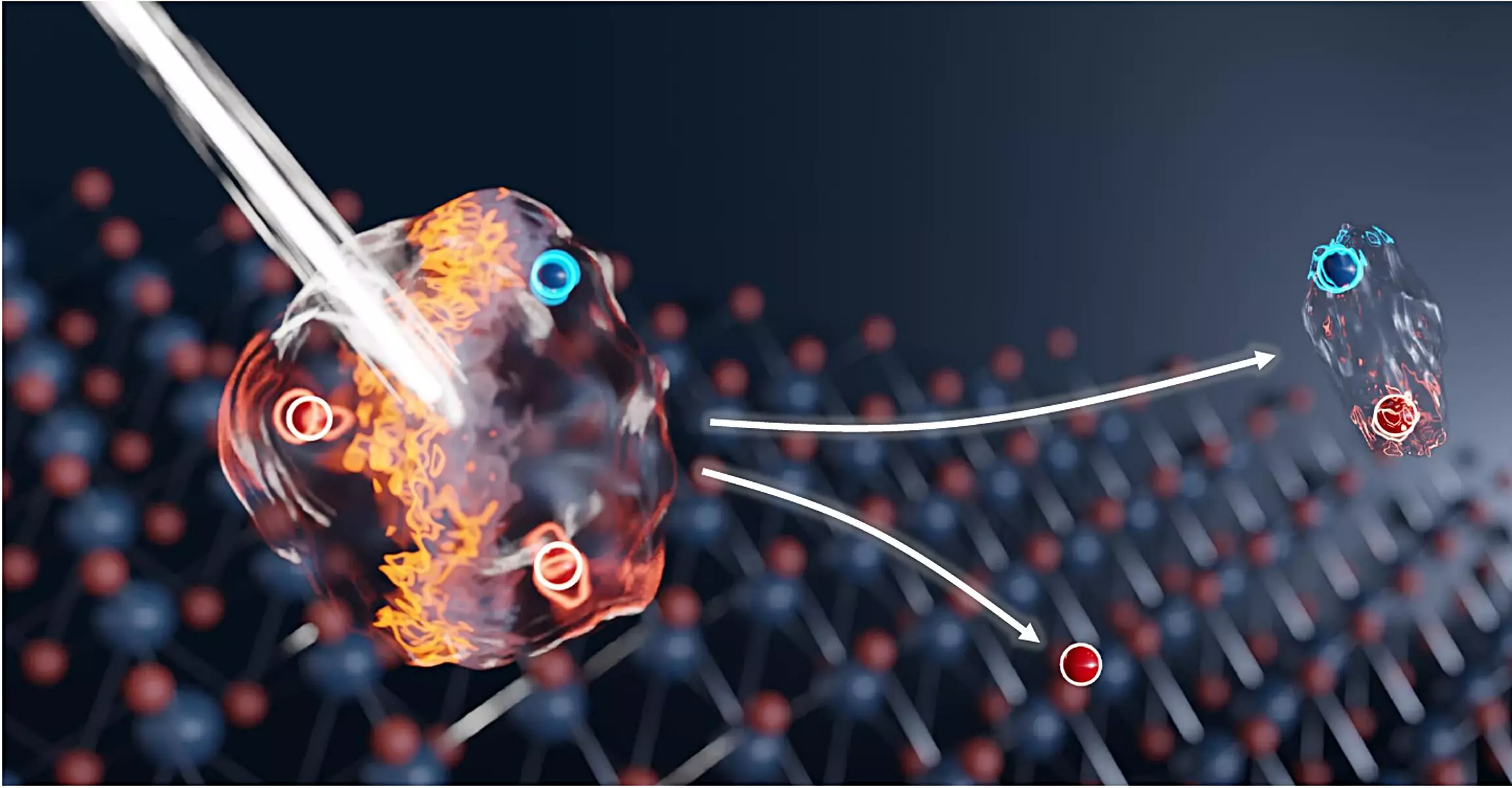The recent advancements in the field of two-dimensional (2D) materials paint an optimistic picture for both electronics and quantum technology applications. Researchers from the Technische Universität Dresden (TU Dresden), in collaboration with the Helmholtz-Zentrum Dresden-Rossendorf (HZDR), have showcased how extremely thin materials with just a few atomic layers can facilitate rapid switching processes. This evolution not only expands the horizons of fundamental research but also paves the way for enhanced optical data processing and flexible detection devices, as documented in the prestigious journal Nature Photonics.
Two-dimensional semiconductors exhibit unique characteristics that differentiate them from traditional bulk materials. One such notable property is their ease of generating excitons—quasi-particles formed when an electron is excited and leaves behind a positively charged vacancy known as a “hole.” This electron-hole pair can attract additional electrons, forming a trion, a three-particle complex that integrates both electronic charge and significant light-emitting capabilities. This intrinsic coupling of electrical and optical properties offers intriguing potential for innovative applications in future technologies.
The study led by Professor Alexey Chernikov and physicist Dr. Stephan Winnerl focused on the interaction between excitons and trions. While previous research confirmed the possibility of toggling between these two states, the switching speed was often inadequate for practical applications. In this groundbreaking study, the researchers from TU Dresden and their international collaborators successfully accelerated this process to unprecedented speeds.
Utilizing specialized technology at the HZDR, particularly the FELBE free-electron laser that produces intense terahertz pulses, the research team illuminated an atomically thin layer of molybdenum diselenide at cryogenic temperatures. The excitement of the electrons via short laser pulses initiated the formation of excitons, which subsequently captured additional electrons, transitioning into trion states. The game-changing aspect of this research was the use of terahertz pulses to induce rapid transitions back to excitons.
Dr. Winnerl explained that the breaking of the weak bond holding the exciton and the electron together could be achieved within a mere few picoseconds—a time frame almost a thousand times quicker than previously recorded methods. This speed enhancement provides versatility and the potential for on-demand generation—an aspect that could revolutionize how data is processed electronically and optically.
The ability to manipulate these transitions swiftly greatly amplifies the research possibilities. By exploring different complex electronic states and diverse material platforms, researchers could tap into unique quantum states of matter generated by strong interactions among numerous particles. Such findings would be crucial for developing novel applications capable of operating at ambient temperatures.
The implications of this research extend well beyond theoretical explorations. The ability to swiftly convert trions back into excitons can lead to the creation of new modulator technologies with rapid switching capabilities. With ultra-thin materials functioning at high speeds, components designed for compactness could emerge, allowing for effective electronic control over optically encoded information.
Moreover, the potential for applications in sensor technology is significant. The research foresees the possibility of developing terahertz-range detectors that can be finely tuned across a broad frequency spectrum, possibly resulting in terahertz cameras equipped with numerous pixels. The envisioned detectors could function effectively even with low-intensity triggers, thus democratizing access to terahertz imaging technologies.
The journey from theoretical principles of physics to practical technological implementations is often riddled with challenges. However, the collaborative research efforts exemplified by the TU Dresden and HZDR team indicate remarkable progress in bridging this gap. By understanding and manipulating the properties of excitons and trions within ultra-thin semiconductors, we can anticipate a future replete with innovative applications in data processing, sensor technologies, and advanced imaging systems. The techniques developed through this research not only highlight the transformational potential of 2D materials but also represent a significant milestone in the ongoing exploration of materials science as it intersects with quantum technology. The ability to control electronic and optical behaviors at such rapid speeds heralds a promising future, where science fiction may soon become reality.


Leave a Reply